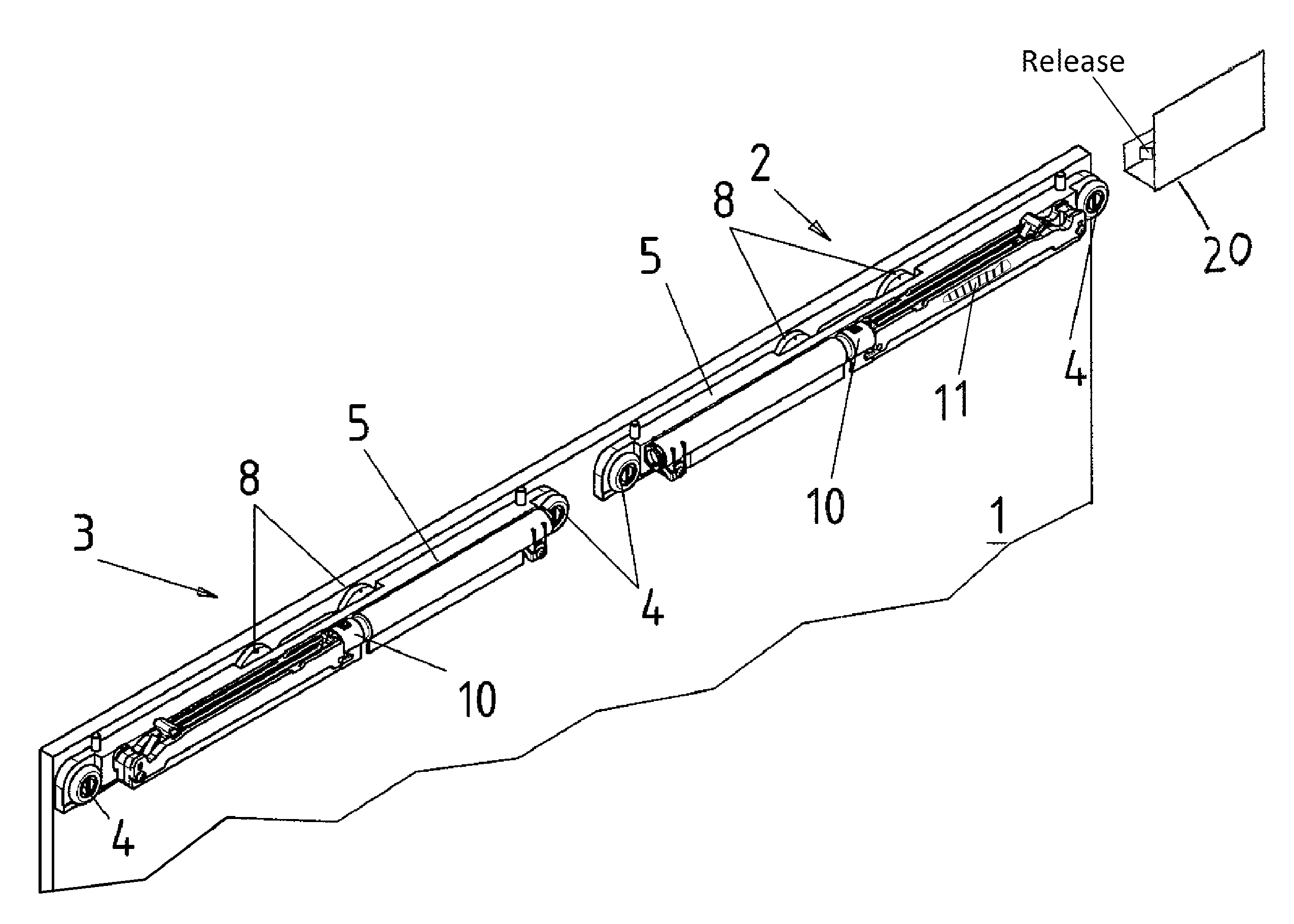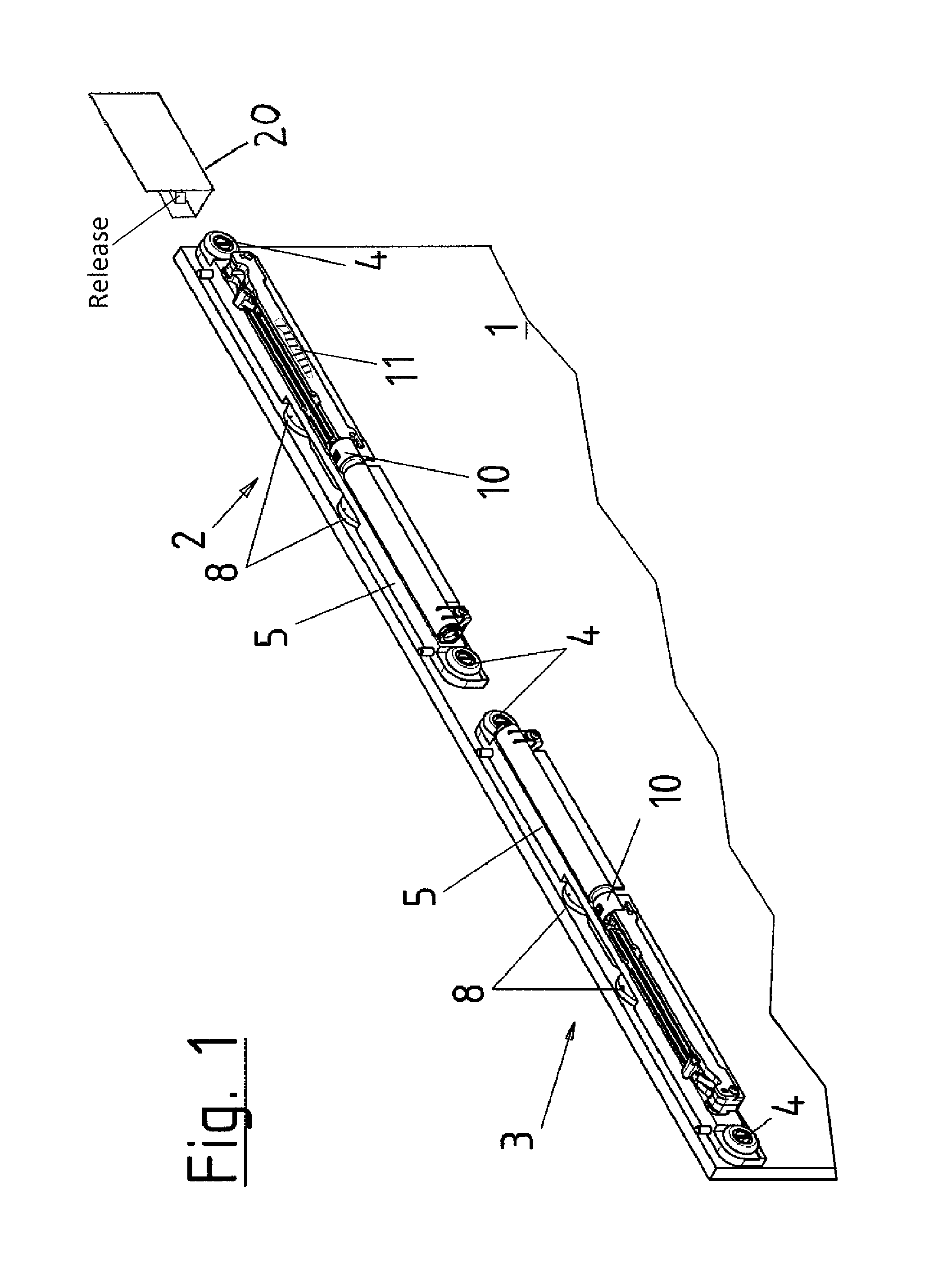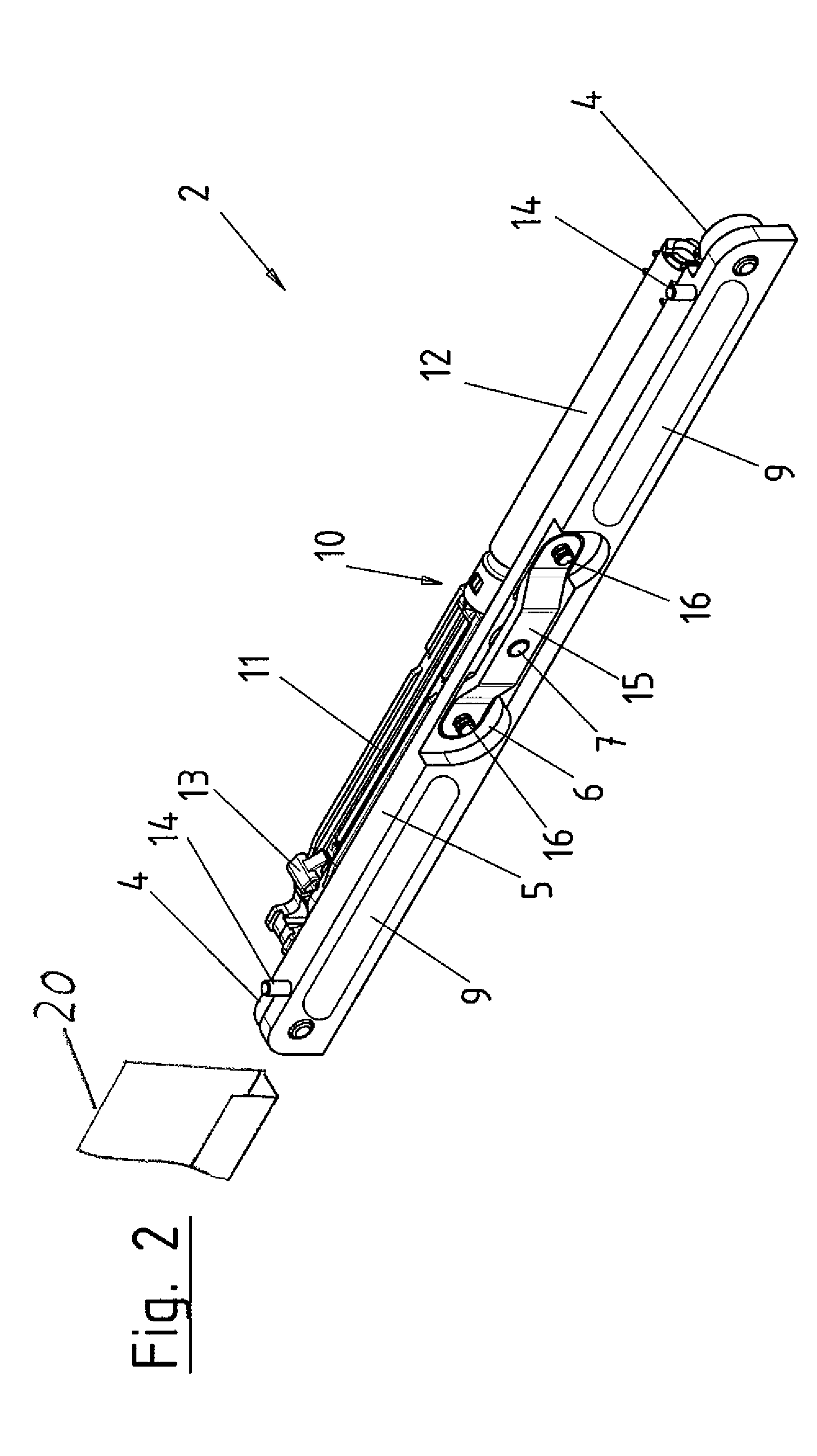Sliding door
a sliding door and door technology, applied in the field of sliding doors, can solve the problems of easy damage to glass doors, damage to doors such as glass doors,
- Summary
- Abstract
- Description
- Claims
- Application Information
AI Technical Summary
Benefits of technology
Problems solved by technology
Method used
Image
Examples
Embodiment Construction
[0019]In FIG. 1, the inventive sliding door is illustrated which comprises a door leaf 1 with two carriages 2, 3. The carriages 2, 3 guide the door leaf 1 in a displaceable manner in a roller rail profile 20, wherein the roller rail profile is directly or indirectly attached to a wall or to a ceiling. The door leaf 1 may consist of glass, wood or another arbitrary material. Each carriage 2, 3 has a carrier 5, one carrying roller 4 each being disposed at the opposite ends of the carrier. In this case, the carrying rollers 4 are disposed for example in a depression at the carrier 5, such that the carrier 5 can be configured with a minimum depth.
[0020]The door leaf 1 is attached to the carrier 5 of the carriages 2, 3 by a clamping device or an attachment device. These devices may consist of a single point fixing, in which the clamping element engages in a bore of the door leaf 1 and clampingly retains the latter.
[0021]The attachment device may also consist of an adhesive adapter 8 atta...
PUM
 Login to View More
Login to View More Abstract
Description
Claims
Application Information
 Login to View More
Login to View More - R&D
- Intellectual Property
- Life Sciences
- Materials
- Tech Scout
- Unparalleled Data Quality
- Higher Quality Content
- 60% Fewer Hallucinations
Browse by: Latest US Patents, China's latest patents, Technical Efficacy Thesaurus, Application Domain, Technology Topic, Popular Technical Reports.
© 2025 PatSnap. All rights reserved.Legal|Privacy policy|Modern Slavery Act Transparency Statement|Sitemap|About US| Contact US: help@patsnap.com



